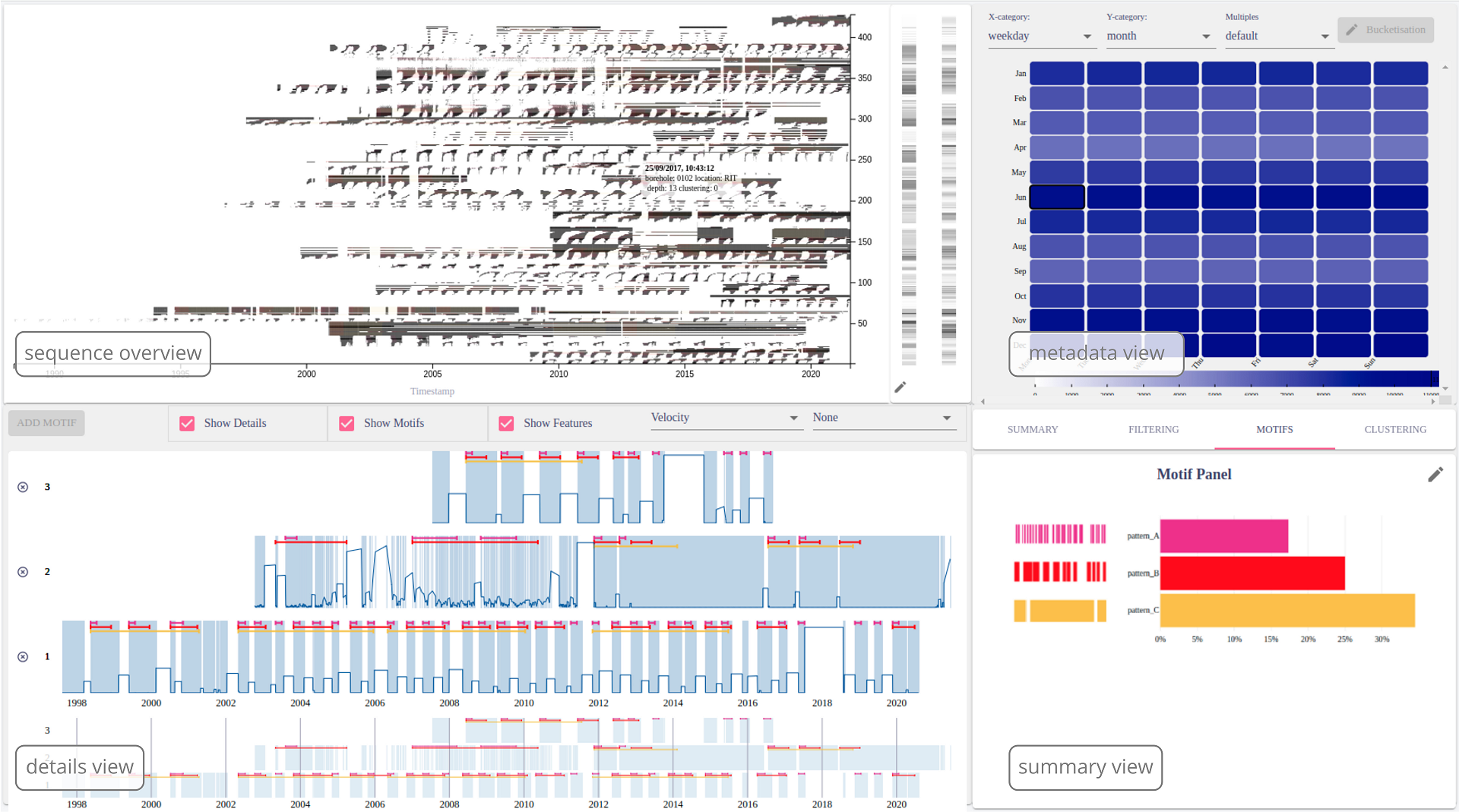Visual Analysis of Time-Stamped Event Sequences
Jürgen Bernard -
Clara-Maria Barth -
Eduard Cuba -
Andrea Meier -
Yasara Peiris -
Ben Shneiderman -
DOI: 10.1109/TVCG.2024.3382760
Room: Bayshore VI
2024-10-16T14:51:00ZGMT-0600Change your timezone on the schedule page
2024-10-16T14:51:00Z

Fast forward
Full Video
Keywords
Time-Stamped Event Sequences, Time-Oriented Data, Visual Analytics, Data-First Design Study, Iterative Design, Visual Interfaces, User Evaluation
Abstract
Time-stamped event sequences (TSEQs) are time-oriented data without value information, shifting the focus of users to the exploration of temporal event occurrences. TSEQs exist in application domains, such as sleeping behavior, earthquake aftershocks, and stock market crashes. Domain experts face four challenges, for which they could use interactive and visual data analysis methods. First, TSEQs can be large with respect to both the number of sequences and events, often leading to millions of events. Second, domain experts need validated metrics and features to identify interesting patterns. Third, after identifying interesting patterns, domain experts contextualize the patterns to foster sensemaking. Finally, domain experts seek to reduce data complexity by data simplification and machine learning support. We present IVESA, a visual analytics approach for TSEQs. It supports the analysis of TSEQs at the granularities of sequences and events, supported with metrics and feature analysis tools. IVESA has multiple linked views that support overview, sort+filter, comparison, details-on-demand, and metadata relation-seeking tasks, as well as data simplification through feature analysis, interactive clustering, filtering, and motif detection and simplification. We evaluated IVESA with three case studies and a user study with six domain experts working with six different datasets and applications. Results demonstrate the usability and generalizability of IVESA across applications and cases that had up to 1,000,000 events.